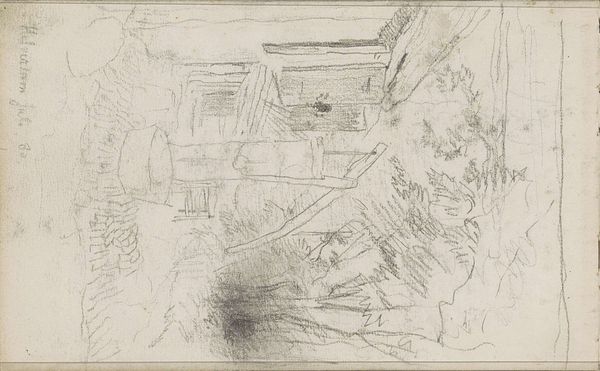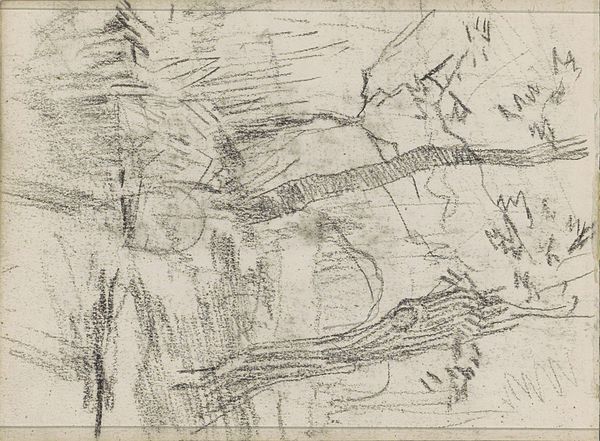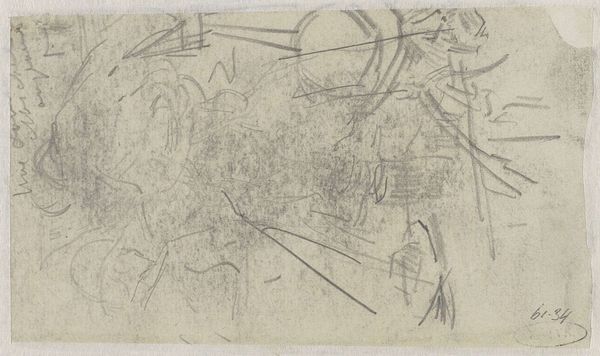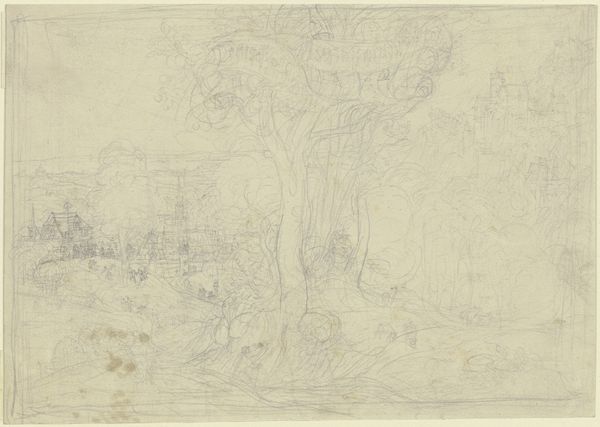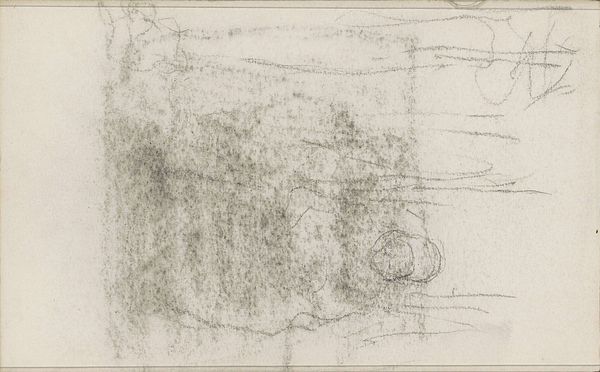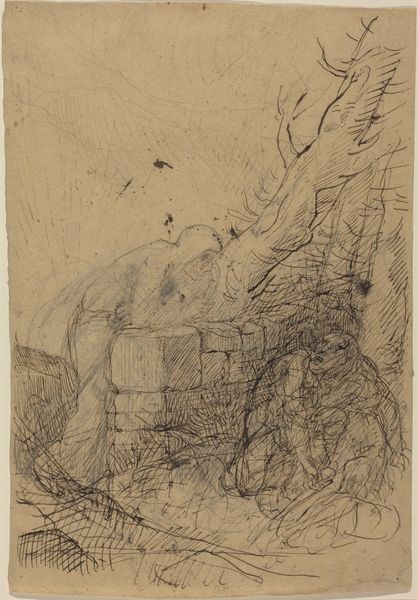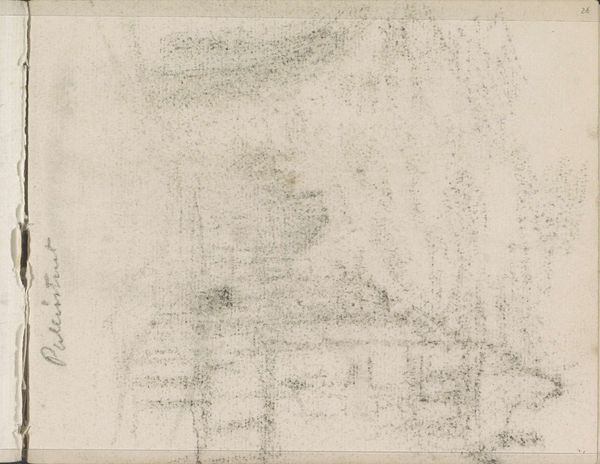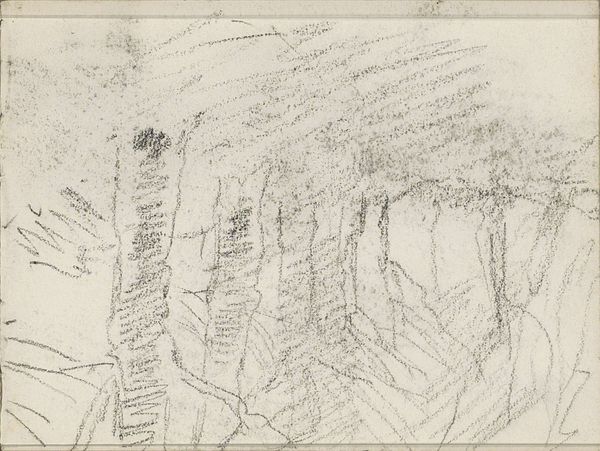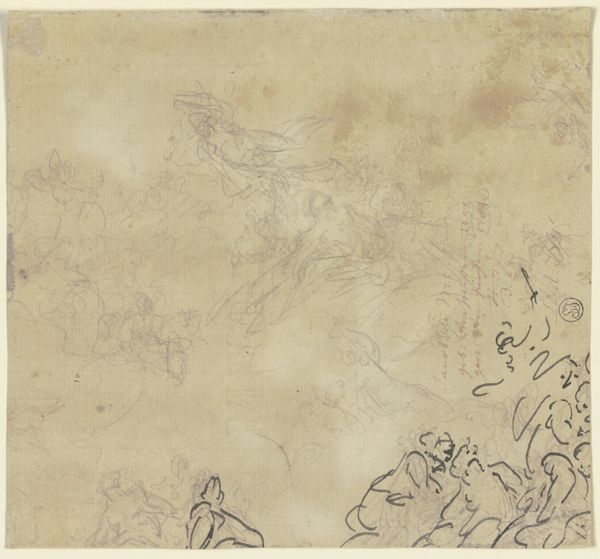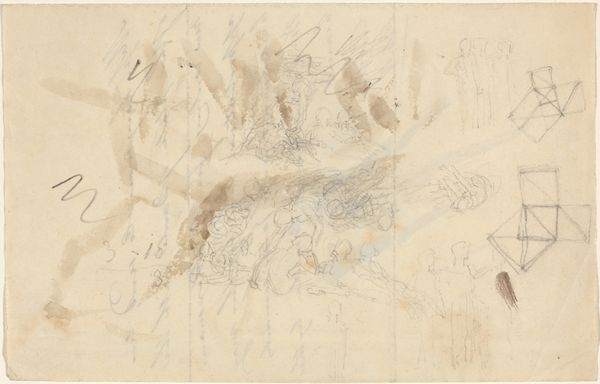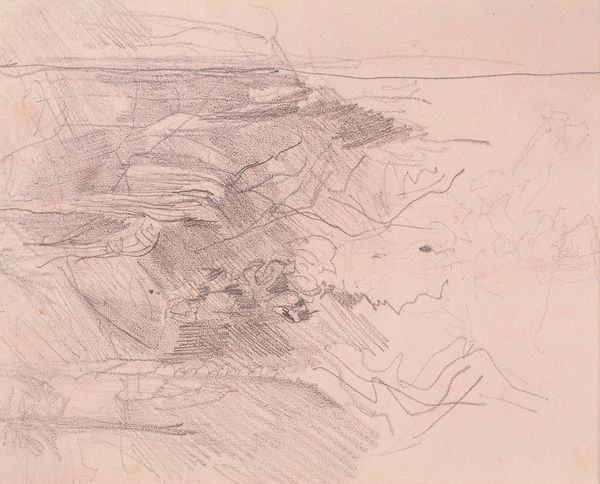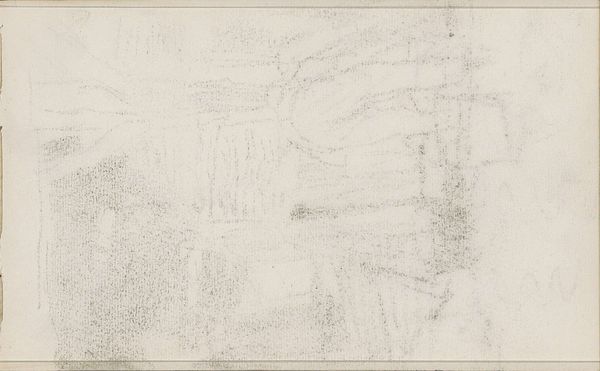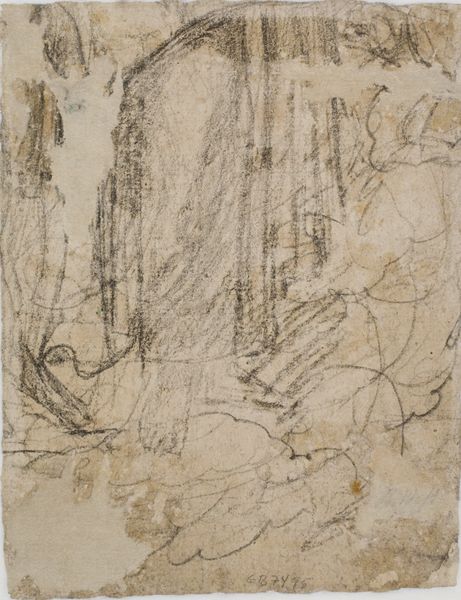
drawing
#
drawing
#
amateur sketch
#
toned paper
#
light pencil work
#
pencil sketch
#
incomplete sketchy
#
possibly oil pastel
#
underpainting
#
detailed observational sketch
#
pencil work
#
watercolor
Copyright: Public Domain: Artvee
Editor: So, this is James Ensor's "Christ shown to the People and Christ's Entry into Jerusalem," a drawing from 1887, it looks like it’s in pencil on toned paper. It’s very faint, almost like a ghostly apparition of a scene. I'm struck by how preliminary it feels, a glimpse into the artist's process. What can you tell me about it? Curator: Well, beyond just being a preliminary sketch, consider Ensor’s social position and the artistic climate of the time. This piece hints at Ensor’s complex relationship with established religious and political institutions. Does the hasty, almost frantic nature of the sketch give you any clues as to how he might have felt about those institutions? Editor: It definitely feels like he’s wrestling with something, not reverently depicting a biblical scene. The figures are almost caricatures, or at least very quickly rendered, without much detail. Was he critical of the church? Curator: Exactly! Ensor was deeply skeptical of authority. The "sketchiness" isn’t just a stylistic choice; it's a visual representation of the chaos and corruption he perceived in society. Consider how the burgeoning avant-garde movements were questioning traditional values and challenging the role of art itself. Does this relate to the garish theatricality of the image? The pomp of religious ceremony? Editor: That makes sense. It's like he's stripping away the veneer of respectability to reveal something more raw and perhaps more truthful. I can see that performative quality now in the figures he’s chosen to focus on, they stand out, as if ‘spotlighted.’ Curator: And notice the crowd; it isn't presented as a unified body of believers but as a teeming, almost grotesque mass. Reflect on how Ensor utilized such imagery to question collective thought and potentially reveal anxieties of late 19th century Belgian society. Editor: This has made me rethink what I saw as a preliminary sketch. I appreciate knowing how its social context plays a role in interpreting Ensor’s intention! Curator: And hopefully you now see how art is rarely made in a vacuum, but engages directly with social and cultural dynamics. A ‘sketch’ is always more than what it appears to be on the surface!
Comments
No comments
Be the first to comment and join the conversation on the ultimate creative platform.
